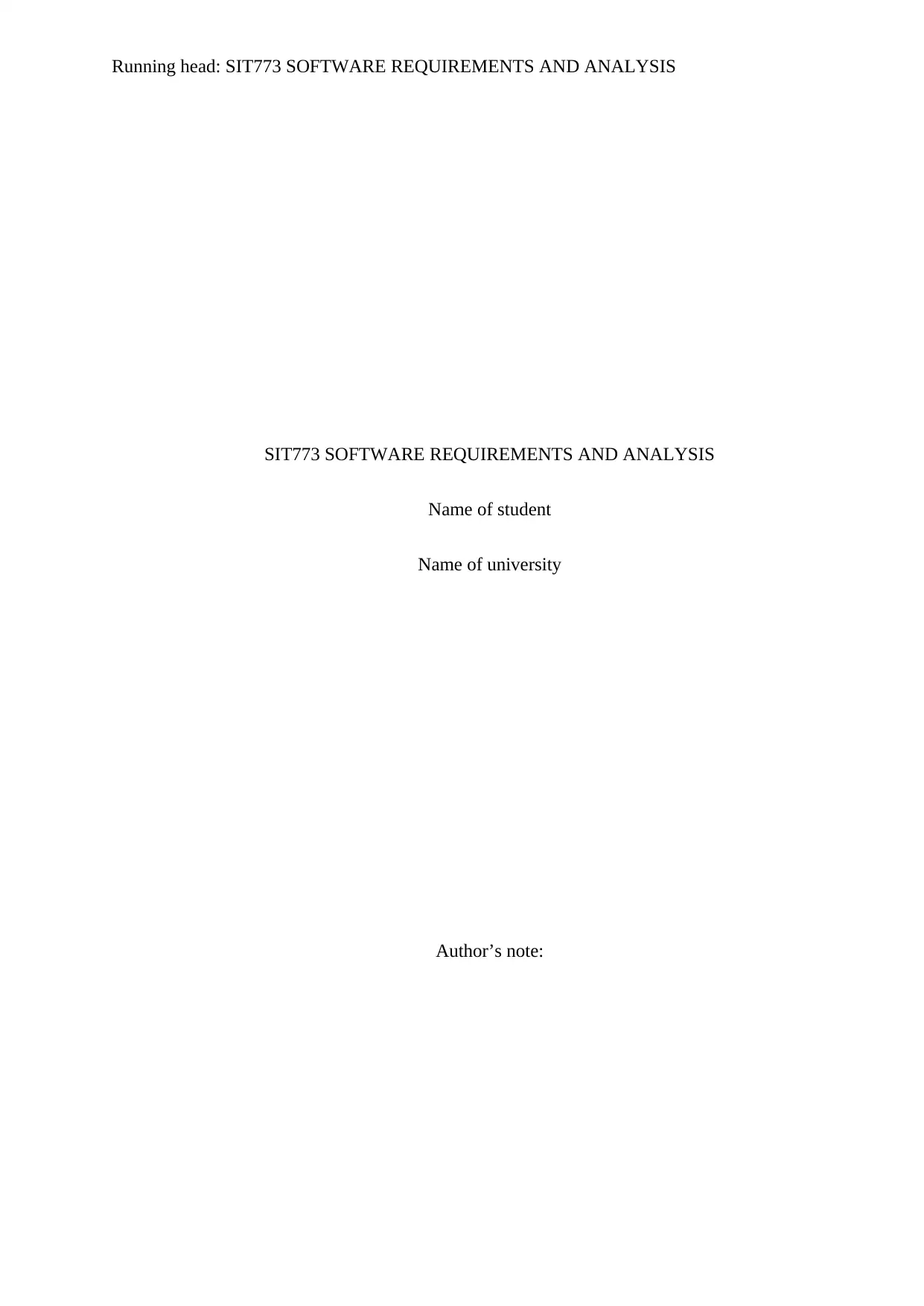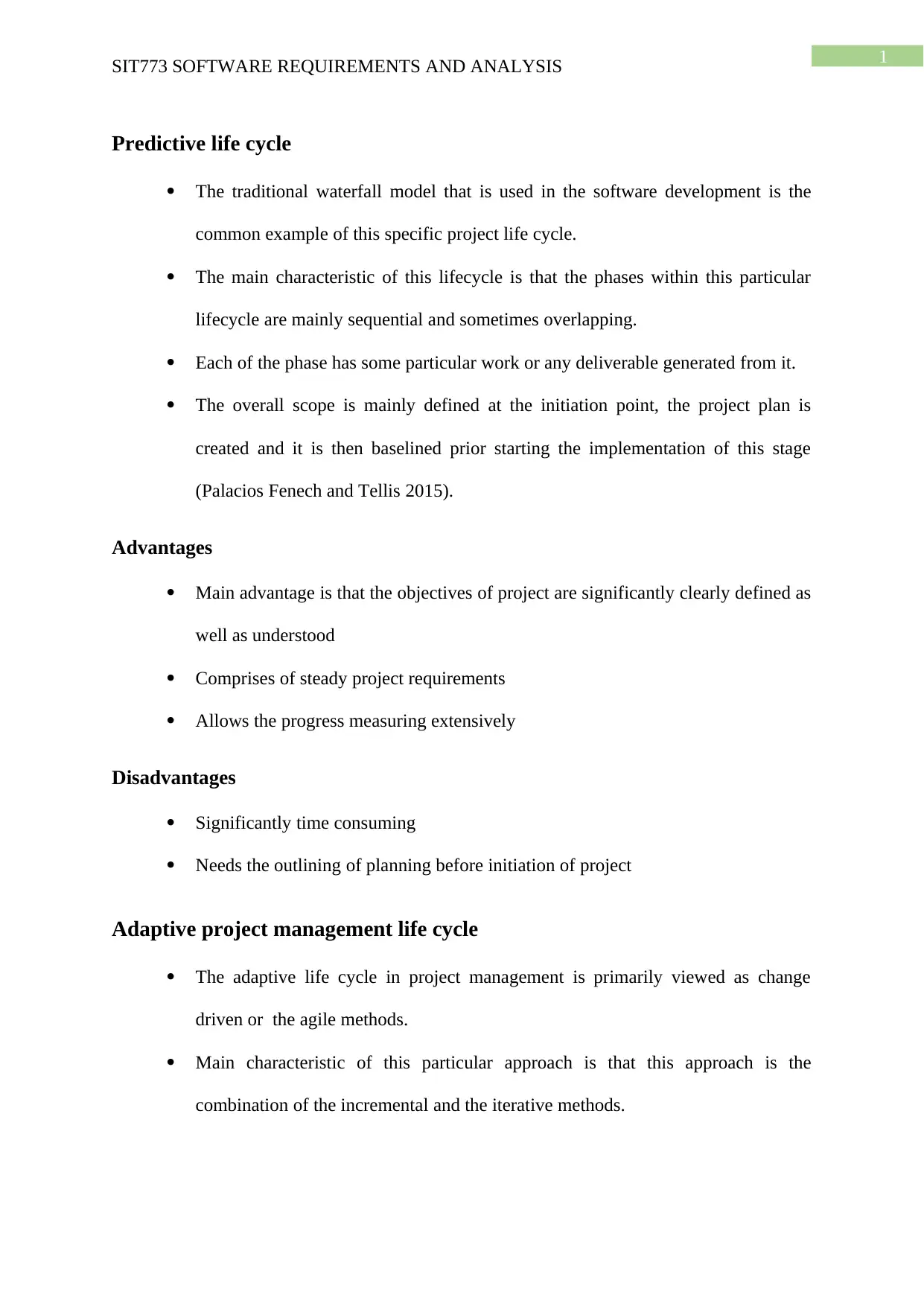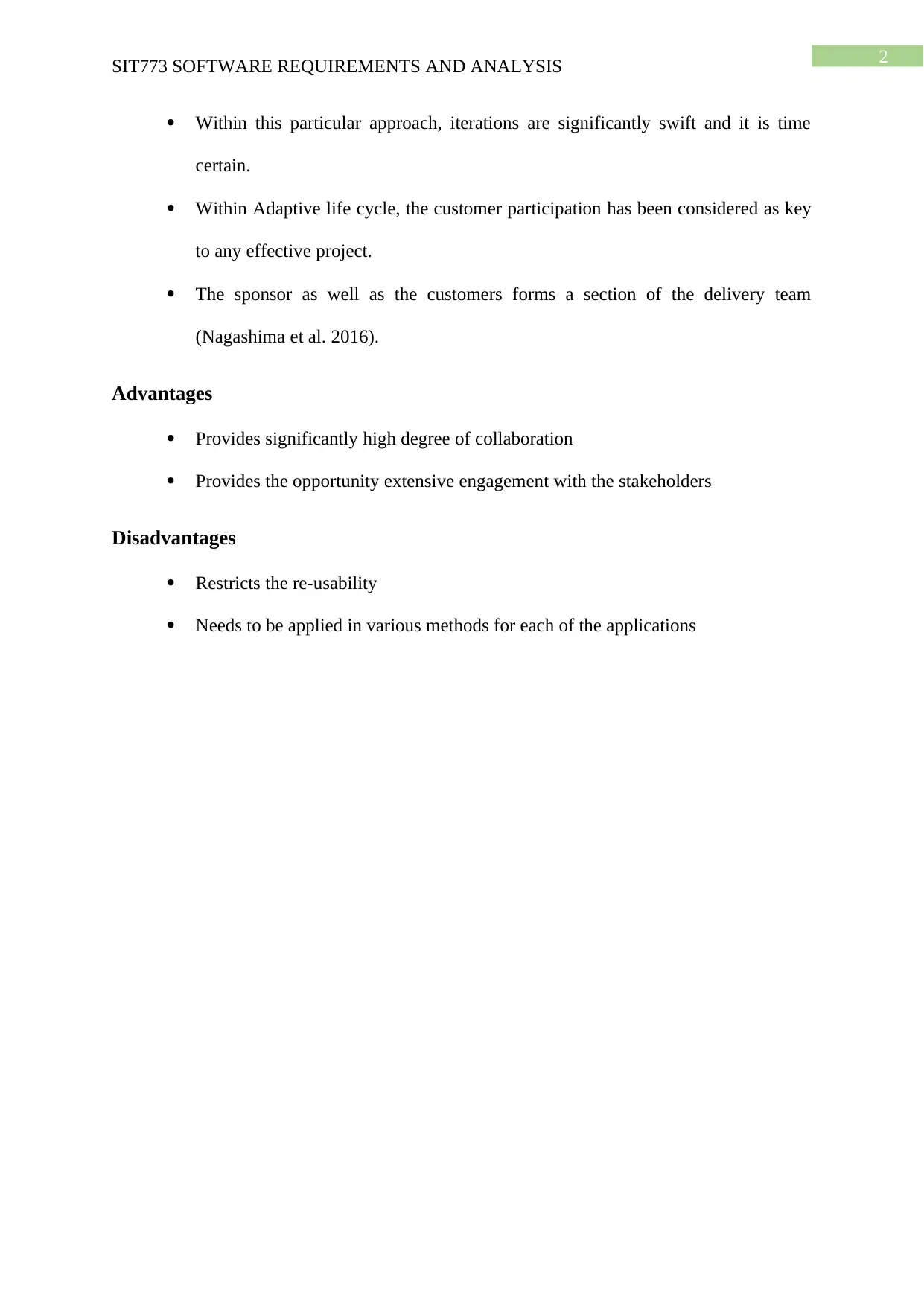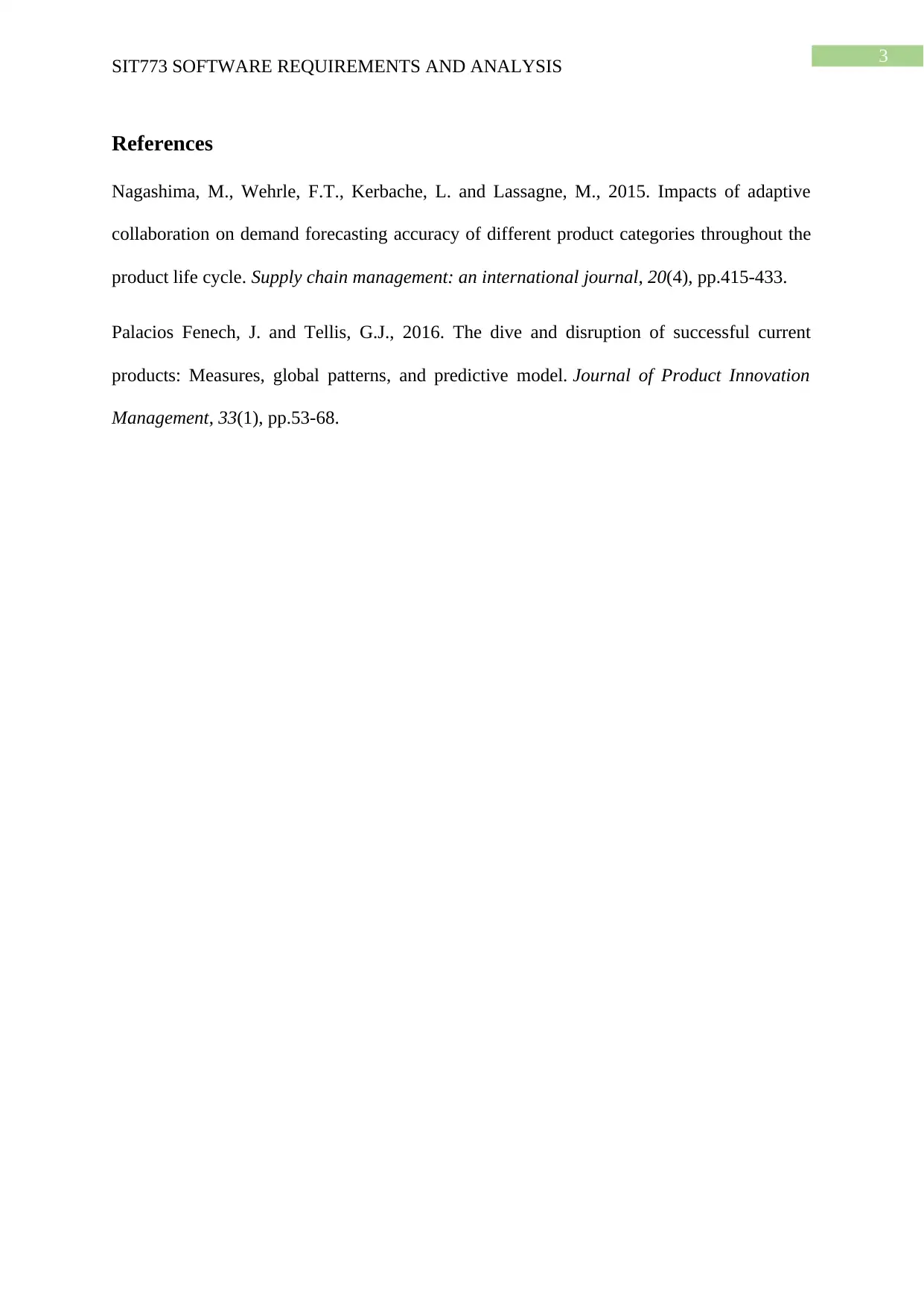Analysis of Project Life Cycles in SIT773 Software Requirements Report
VerifiedAdded on 2022/12/26
|4
|421
|83
Report
AI Summary
This report analyzes the characteristics, advantages, and disadvantages of two primary project life cycles: predictive and adaptive. The predictive life cycle, often exemplified by the waterfall model, is characterized by sequential phases and a clearly defined scope at the outset. Its advantages include well-defined objectives and the ability to measure progress, while its disadvantages include time consumption and the need for extensive upfront planning. The adaptive life cycle, incorporating agile methods, emphasizes iterative and incremental development, with customer involvement as a key component. Advantages of the adaptive life cycle include high collaboration and stakeholder engagement, but it may restrict re-usability and require application-specific adaptations. The report also discusses how project tasks vary based on the chosen life cycle, providing a comparative analysis of these two approaches to software development and project management.
1 out of 4










![[object Object]](/_next/static/media/star-bottom.7253800d.svg)